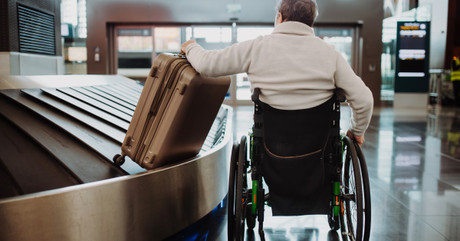Pro Tips for Protecting Your Wheelchair for Travel
Aug 26th 2025

Traveling with a wheelchair can be troublesome for a lot of people with mobility issues. Between rough baggage handlers and cramped airplane cargo holds, your mobility aid faces serious risks every time you leave home. But you shouldn’t let that stop you from exploring the world; utilize these tips to protect your wheelchair when traveling.
Understand Airline Policies and Your Rights
Before you book a flight, review the airline’s wheelchair policies. The Air Carrier Access Act requires airlines to transport wheelchairs for free, but each carrier has different procedures for handling mobility equipment.
You can contact the airline directly and discuss your wheelchair’s features and learn more details about how airline personnel will handle it throughout your travels.
Be sure to ask about the airline’s packaging requirements and whether they provide protective covering. This will help you know if you need to provide your own covering, so your wheelchair arrives at the destination in perfect condition.
Create a Detailed Instruction Sheet
Clear instructions on your wheelchair can help the baggage handlers understand how to keep the wheelchair safe during packaging and deboarding. Include photos of your chair from multiple angles, and highlight fragile components, such as the brakes, armrests, and footrests.
Write step-by-step disassembly instructions if parts need removal. Use simple statements so the task doesn’t become overcomplicated for someone who is unfamiliar with your wheelchair. Lastly, laminate the sheet or use waterproof paper; cargo holds can be damp environments.
Remove and Pack Detachable Parts
The expensive additions to your wheelchair, such as joysticks and cushions, should come with you into the cabin. Airlines allow you to carry wheelchair parts as medical equipment without counting against your carry-on limit.
Pack everything in a sturdy bag with plenty of padding. Consider using a hard-case suitcase for particularly delicate components like electronic controls. Label each part with your contact info. If you lose or misplace a part, you’ll want it returned quickly.
Invest in Protective Covering
Protective covering can make traveling with a wheelchair much easier. Look for bags made from heavy-duty materials with reinforced stress points. Your bag should fit snugly but not compress delicate parts.
If you can’t afford a custom bag, improvise with moving blankets and plastic wrap. Secure everything with heavy-duty tape, but avoid taping directly to the wheelchair’s finish.
Know What To Do If Damage Occurs
Once you’re off the flight, inspect your wheelchair immediately. Never leave the airport before checking over your wheelchair for any damage or issues in movement.
If you discover damage, report it to airline personnel right away. Get written documentation of the problem and insist on a copy for your records. Don’t sign anything that admits fault or minimizes the damage.
Take photos of the damage, and send them to the airline with photos you took before traveling. The airline should provide a loaner wheelchair if yours is unusable. If they do not offer a loaner wheelchair, don’t hesitate to ask the airline for one.
Traveling Smart Means Traveling Protected
With these strategies, you can protect your wheelchair while traveling and keep your freedom and independence safe throughout the trip. Remember, you’re not just protecting equipment; you’re safeguarding your independence.
Protecting your wheelchair shouldn’t have to be a struggle, but people still face problems. When your wheelchair components are damaged, DME Hub can provide the best wheelchair parts online to suit your mobility needs. From accessories to footrests, we can help you find wheelchair replacement parts promptly.

